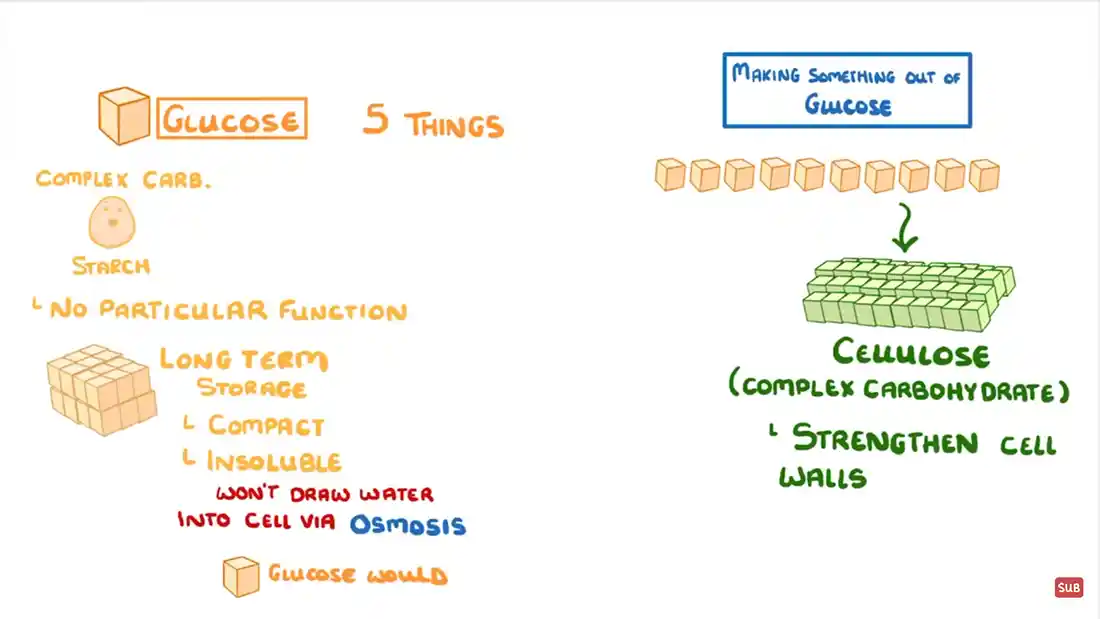

Plant, photosynthesis, sunlight, carbon dioxide, oxygen, energy, glucose, water, plastid, protein, calvin cycle, chlorophyll, chloroplast, photosynthetic organism.
Most life on Earth rely on sunlight for one reason or another. For humans, it's for warmth during the summer, and to help us dry our clothes when it's shining. For plants, it's to help them reproduce, feed themselves and photosynthesise.
So, plants can't just feed themselves, right? It's not like they can get up off the ground, go to the kitchen fridge and pull food out of it to eat (imagine that). But they do actually feed themselves.
Plants (and trees) make their own food, so they can grow as big as they need. This is done through photosynthesis. When this occurs, the plants take in carbon dioxide and water, and release glucose and oxygen. This is the opposite of what happens during respiration.
Photosynthesis uses reactants to make products. The carbon dioxide and water are both classed as a reactant here. A reactant is a molecule that combines with another one to form new compounds.
The word equation for this is:

Carbon Dioxide + Water = Glucose + Oxygen
During the process, sunlight is added along with use of the chlorophyll. The balanced equation looks something like this:

6 CO2 + 6 H2O = C6H12O6 + 6 02
Again, during the process, sunlight is added along with use of the chlorophyll. You can see what I mean by checking out the resources.
The end of the process creates the products. Those are the oxygen and glucose molecules.
The following still is from a video on photosynthesis, with the following details:
Please click on the image to view the video.

A photosynthetic organism is an organism that works with sunlight to create oxygen, energy and food sources. This includes not just plants that you can see above ground, but also aquatic plants that live under water, and photosynthetic algae. So, what does this mean?
Well, we all rely on them. Why? Because without them, we would not have enough oxygen in the atmosphere to live. They all produce oxygen (even the aquatic ones - what do you think water is made of?) and this is why we need to maintain them and look after them.

It's not just trees that produce the oxygen we breathe. In fact, up to 70% of all the world's oxygen production is undertaken by photosynthetic phytoplankton, an aquatic producer.
Chloroplasts are a type of plastid (this is an evolving organelle that can change depending on the amount of sunlight) which are green coloured. They give the plant the green colour we associate with a plant and interact with chlorophyll. It is the building block for photosynthesis, because it converts the sunlight into energy.
Chloroplasts are tiny, but there are many of them. They are located within the mesophyll of the plant. Shape-wise, they are normally oval, and biconvex, which is bulbous. If you look at them under a microscope, you will see they have two membranes, and space between them.
It's main function is to interact with sunlight to create the energy needed for the plant to grow, and later helps with reproduction. It produces proteins from the process of photosynthesis. The process where plants make these proteins is called the Calvin cycle.
There is an exception:
Rafflesia: a parasitic plant that gets its nutrients from other plants, does not have chloroplasts, and doesn't have the genetic coding to make chloroplasts. This has happened over millennia as it has evolved. It is the only known genus of land plant that is capable of this.
While photosynthesis allows the plant to grow up and in abundance, there are also limiting factors to consider. These are factors that will limit the amount of growth the plant can achieve. They include physical factors such as shallow ground for roots to grow in, or biological factors such as a disease like black spot on roses that stop the photosynthesis from occurring.
Limiting factors also include things like predation, competition, and other factors like the amount of water present, oxygen levels, how much salt (salinity) is in the ecosystem, and much more.
Try and answer the following questions without looking first:
Glucose and Oxygen. These are the products for photosynthesis. The glucose is used for energy in the plant, and the oxygen is released into the atmosphere.
Chloroplast. These tiny organelles (structures of the cells) are what give a plant their green colour.
Activities to be used in the classroom.

If you are unable to see the board, please click here.
Funny image showing the process of photosynthesis, image courtesy  Clube da Biologia.
Clube da Biologia.
Disclaimer | About Me | Sitemap



Blue icons adapted from icons courtesy of Smashicons.com